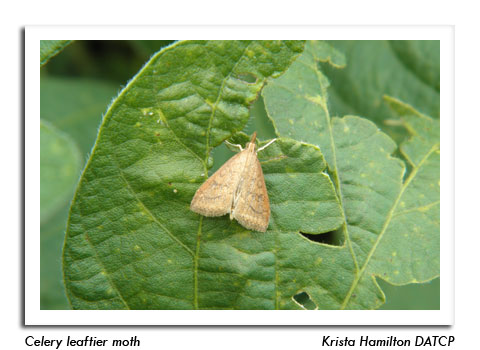
 |
|
|
Soybeans
Volume 64 Number 16 Date 08/15/2019 SOYBEAN APHID - Surveys continue to indicate that populations remain well below the 250 aphid-per-plant treatment threshold in most Wisconsin soybean fields. The state average count is extremely low at just three aphids per plant in 134 fields sampled between July 25 and August 14. Only one field, in Washburn County, had an average above 35 aphids per plant, and 32 fields had no detectable population. GREEN CLOVERWORM - Larvae are still very common in surveyed soybean fields. Defoliation rates are generally minor at less than 5-10%, with locally higher populations observed in Jackson, La Crosse and Trempealeau counties in the west-central area. This sporadic soybean pest is highly susceptible to parasitism and disease, and is normally controlled naturally without insecticide use. SOYBEAN DEFOLIATORS - Defoliation by celery leaftiers, grasshoppers, green cloverworms, Japanese beetles, leafrollers, stink bugs and thistle caterpillars is prevalent in sampled fields, particularly around field perimeters. A combined defoliation rate exceeding 20% for soybeans in the seed-filling stages may justify treatment if the insects are actively feeding and damage is expected to increase. Defoliation estimates should be based on all parts of the soybean canopy (not just the injured portion) to avoid overestimating leaf injury and thus making unnecessary insecticide applications. CELERY LEAFTIER - Large numbers of this tan moth that resembles a small European corn borer were noted during surveys in Portage and Wood counties. The larvae attack cultivated flowers, weeds, and vegetables, including beans, beets, celery and spinach, but are not considered a threat to field crops. The last time celery leaftier populations reached significant levels in Wisconsin was in 2010. -- Krista Hamilton, DATCP Entomologist 





|
|
|